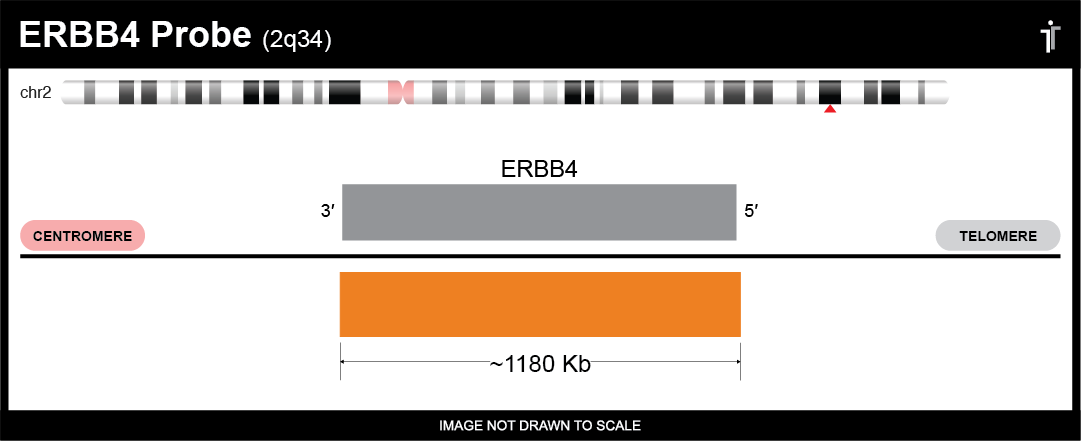ERBB4 FISH Probe
Potential therapeutic marker, ERBB4, located on chromosome 2q34, promotes tumor growth in ER-positive breast cancer. Other associated cancers include, lung, prostate, colon, liver, and esophageal.
Empire Genomics has developed a custom ERBB4 probe which can be used to detect/confirm a rearrangement of the ERBB4 gene. The probe comes labeled in orange, and you may also choose to customize the probe to meet your needs.

** This product is for in vitro and research use only. This product is not intended for diagnostic use.

| SKU | Test Kits | Buffer | Dye Color | Order Now |
|---|---|---|---|---|
| ERBB4-20-OR (Standard Design) | 20 (40 μL) | 200 μL |

|
|
| ERBB4-20-GO | 20 (40 μL) | 200 μL |

|
|
| ERBB4-20-GR | 20 (40 μL) | 200 μL |

|
|
| ERBB4-20-AQ | 20 (40 μL) | 200 μL |

|
|
| ERBB4-20-RE | 20 (40 μL) | 200 μL |

|
Gene Summary
This gene is a member of the Tyr protein kinase family and the epidermal growth factor receptor subfamily. It encodes a single-pass type I membrane protein with multiple cysteine rich domains, a transmembrane domain, a tyrosine kinase domain, a phosphotidylinositol-3 kinase binding site and a PDZ domain binding motif. The protein binds to and is activated by neuregulins and other factors and induces a variety of cellular responses including mitogenesis and differentiation. Multiple proteolytic events allow for the release of a cytoplasmic fragment and an extracellular fragment. Mutations in this gene have been associated with cancer. Alternatively spliced variants which encode different protein isoforms have been described; however, not all variants have been fully characterized. [provided by RefSeq, Jul 2008]
Gene Details
Gene Symbol: ERBB4
Gene Name: Erb-b2 Receptor Tyrosine Kinase 4
Chromosome: CHR2: 212240441-213403352
Locus: 2q34
FISH Probe Protocols
| Protocol, Procedure, or Form Name | Last Modified | Download |
|---|